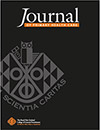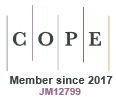HC25162 Full Text | HC25162PDF (644 KB) Open Access Article

Volume 17 Number 3 2025
What is already known: Degenerative cervical myelopathy (DCM) is the leading cause of adult spinal cord dysfunction, with average diagnostic delays of 2.5 years often resulting in irreversible neurological impairment. Primary care clinicians are well positioned to identify DCM early, yet international research suggests that condition awareness is lacking. What this study adds: This study is the first to assess DCM awareness and diagnostic confidence among primary care clinicians in Aotearoa New Zealand, revealing critical knowledge gaps. The findings highlight the need for targeted education and standardised referral criteria to facilitate timely detection and surgical consultation.
HC24180 Abstract | HC24180 Full Text | HC24180PDF (848 KB) Open Access Article
What is already known: Although telerehabilitation offers the potential to improve access to rehabilitation for people with mild traumatic brain injury (mTBI) and reduce health disparities, the services must be tailored to meet the specific needs of this population. What this study adds: This study provides information about the aspects of rehabilitation that are most valued by patients and how telerehabilitation services can be designed to best meet the specific needs of this population in Aotearoa New Zealand. Considering the travel time, cost and familiarity with their therapist, the results suggest that long telerehabilitation sessions would be the most valued option.
HC24158 Abstract | HC24158 Full Text | HC24158PDF (862 KB) Open Access Article
HC25056Imaging in low back pain: a cross-sectional analysis of Australian early-career general practitioners’ ordering of imaging for non-specific low back pain

What is already known: Low back pain (LBP) guidelines often restrict recommendations for imaging to cases presenting with specific ‘red flags’. Imaging of non-specific LBP (NSLBP) is associated with high economic cost and no prognostic benefit, but imaging continues to be over-utilised in the diagnostic evaluation of LBP in general practice. What this study adds: Although Australian GP registrars appear to be taking a considered approach to imaging for NSLBP, the prevalence of imaging likely exceeds optimal levels, at significant cost and potentially poorer patient outcomes.
HC25056 Abstract | HC25056 Full Text | HC25056PDF (726 KB) | HC25056Supplementary Material (696 KB) Open Access Article
What is known about the topic: Routinely collected administrative and health data have potential to be used for research that provides real-world health insights that can inform policy and improve clinical practice and population health. Engaging stakeholders to establish priorities can help ensure research is fit for purpose, provides important health benefits, and has the greatest potential to improve health equity. What this study adds: Primary care clinicians and academics identified the top research areas to improve health equity in primary care as the health workforce, health services, mental health, and models of primary health care. The top research questions include evaluating the impacts of annual health checks for people with intellectual disability, the role of allied health as front-line primary health care providers, and the role of an embedded social worker in a general practice clinic setting.
HC24046 Abstract | HC24046 Full Text | HC24046PDF (753 KB) | HC24046Supplementary Material (760 KB) Open Access Article
What is already known: Consultation with key stakeholders is important to inform health research. Including health users from populations with significant health needs is necessary to ensure health research addresses health inequities. What this study adds: This study provides themes from a health user perspective to support future research in the primary health service area to improve and optimise health and wellbeing and reduce health inequities.
HC25036 Abstract | HC25036 Full Text | HC25036PDF (785 KB) | HC25036Supplementary Material (1.1 MB) Open Access Article
HC24190Sport, healthcare and educational organisations’ perceptions of a framework for managing concussion in New Zealand schools: a qualitative study
 , Anja Zoellner
, Anja Zoellner  , Patricia Lucas
, Patricia Lucas  , Danielle M. Salmon, Simon Walters
, Danielle M. Salmon, Simon Walters  , Kate Mossman, Sierra Keung, Kylie Thompson and Gisela Sole
, Kate Mossman, Sierra Keung, Kylie Thompson and Gisela Sole 
What is already known: We had co-designed a framework for management of concussion in Aotearoa New Zealand secondary schools with school stakeholders and students with concussion and their parents. What this study adds: Participants from national, regional, and local sports, education, and healthcare organisations suggested that the framework would be of high value to address inconsistent implementation of post-concussion student support, and provided recommendations for wider implementation.
HC24190 Abstract | HC24190 Full Text | HC24190PDF (958 KB) | HC24190Supplementary Material (895 KB) Open Access Article
What is known about this topic: There is a current paucity of research in emergency simulation training in primary care. Although there is literature on the use that emergency simulation education has in secondary care services such as emergency medicine (EM) or for intensive care unit (ICU) staff, it is not well established or validated in primary care. What this study adds: To the best of the author's knowledge, this is the first literature review of studies that evaluate the use of emergency care simulations for primary care clinicians. The findings from this review can help inform and guide the appropriate education and training of primary care clinicians.
HC24005 Abstract | HC24005 Full Text | HC24005PDF (797 KB) Open Access Article
HC25020The Southern Primary Care Research Network 3years on – reflections from the end of the beginning
 , Abigail Pigden
, Abigail Pigden  , Alex Ryde, Carol Atmore
, Alex Ryde, Carol Atmore  , Jing-Ru Li, Tania Moerenhout
, Jing-Ru Li, Tania Moerenhout  , Wenna Yeo, Anna Williams
, Wenna Yeo, Anna Williams  , Alesha Smith
, Alesha Smith  , Robin Turner and Tim Stokes
, Robin Turner and Tim Stokes 
The Southern Primary Care Research Network (PCRN) is a regional research database that facilitates access to primary care data for research that improves health and health equity. This article describes the Southern PCRNs governance and infrastructure development and research undertaken so far. Three data linkage projects, a scoping review, research prioritisation exercises, and the development of an ethical framework for data use are described. Ongoing network funding will help realise the potential of routinely collected health data to inform equitable service delivery, policy, and innovation in population health.
HC25020 Abstract | HC25020 Full Text | HC25020PDF (762 KB) Open Access Article
HC24057Student-run falls prevention programmes for older adult community members: a pilot study
What is known about the topic: Falls among community-dwelling older adults are a significant public health concern. Previous research has highlighted the importance of strength and balance exercises and falls prevention education in reducing fall incidence among older adults. What this study adds: This study shows the potential for student-run interventions in contributing to falls prevention efforts and improving the wellbeing of aging populations.
HC24057 Abstract | HC24057 Full Text | HC24057PDF (700 KB) | HC24057Supplementary Material (454 KB) Open Access Article
HC24096Knee pain dilemma and the initial step to predicting diagnoses in general practice: a cross-sectional study
 , Ann-Sophie Puls, Luc J. M. Heijnens, Jochen W. L. Cals, Ralph T. H. Leijenaar and Ramon P. G. Ottenheijm
, Ann-Sophie Puls, Luc J. M. Heijnens, Jochen W. L. Cals, Ralph T. H. Leijenaar and Ramon P. G. Ottenheijm
What is already known: Knee pain is a common reason to consult a general practitioner (GP), but accurate diagnosis poses a challenge for GPs. To support GPs with this diagnostic dilemma in patients with knee pain, a prediction model could be a useful diagnostic decision support tool, however, this has not yet been developed. What this study adds: In patients with knee pain, for whom GPs experience diagnostic challenges, osteoarthritis is by far the most prevalent diagnosis, followed by patellofemoral pain and meniscal lesions. An age threshold of roughly 50 years is a strong predictor for knee osteoarthritis, patellofemoral pain, and meniscal lesions.
HC24096 Abstract | HC24096 Full Text | HC24096PDF (771 KB) Open Access Article
What is known about the topic: Individuals who hazardously consume alcohol may also present with nutritional problems such as weight loss, underweight, malnutrition, micronutrient deficiency and/or low food security. Previous research has shown limited input from the dietitian during admission to hospital for alcohol withdrawal. What this study adds: Healthcare professionals working within Primary Health Networks have variable confidence providing nutrition-related care to patients discharged from hospital post alcohol withdrawal, indicating a gap in nutrition-related service provision. These insights support the need for best practice guidelines for nutritional management in this population to enhance the role of dietitians within the multidisciplinary team.
HC24142 Abstract | HC24142 Full Text | HC24142PDF (695 KB) Open Access Article
HC25156 Full Text | HC25156PDF (620 KB) Open Access Article



